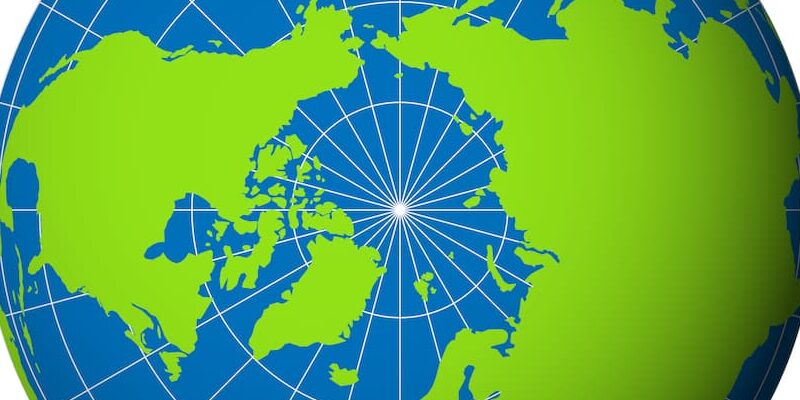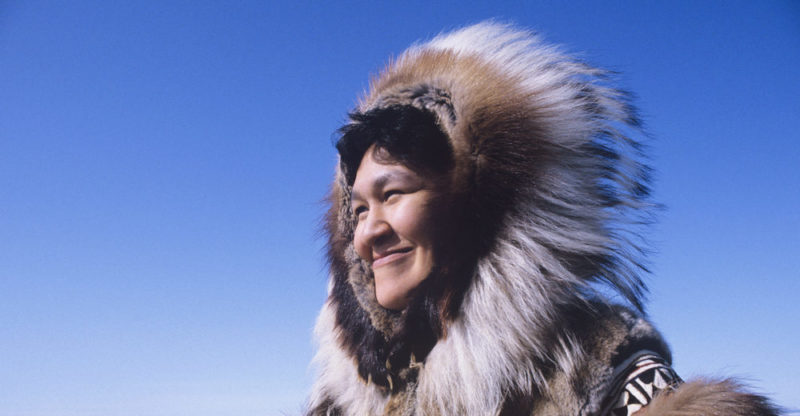We explain what the North Pole is, its characteristics and its types. Also, its climate, flora and fauna, what is a northern lights and more.
What is the North Pole?
The North Pole region is an area, and not just an exact point on the Earth's surface, that extends into the Arctic Ocean and is characterized by a glacial climate throughout the year (with temperatures below 0 ºC almost permanently) , due to almost non-existent humidity and very little rain .
The word arctic derives from the Greek term arktos which means "bear" and refers to the constellations of Ursa Major and Ursa Minor located on the sky of the North Pole area and the arctic region made up of colossal blocks of ice.
The Italian engineer Umberto Nobile, the Norwegian explorer Roald Amundsen and the American explorer Lincoln Ellsworth, together with thirteen other people aboard an airship, were the first to reach the North Pole in 1926 or, at least, those who could evidence the crossing unlike some stories from a few years earlier that could not be proven.
In addition, the north pole is one of the geographical points on the Earth 's surface that coincides with one of the vertices of the imaginary axis of rotation of the planet located in the Arctic region.
Characteristics of the North Pole
Among the main characteristics of the North Pole, the following stand out:
- It is made up of huge ice caps over the Arctic Ocean, but without a continental landmass.
- It is an area that borders countries such as Russia, Iceland , Sweden, Finland, Norway, Denmark, Canada and the State of Alaska in the United States.
- It has an extremely cold temperature , almost always below 0 ºC, throughout the year.
- It features wildlife , such as reindeer, foxes , polar bears, and walruses.
- It is a region where certain unique atmospheric phenomena occur , such as the Northern Lights.
- It comprises an extensive area in which the geographical north pole is located, which coincides with the point that crosses the imaginary terrestrial axis.
North Pole Types

In addition to the North Pole area, there are two other types of North Pole that differ in their layout. The three types of north pole are:
- Geographic North Pole: It is one of the geographical points on the earth's surface that coincides with the northern vertex of the planet's imaginary axis of rotation, which is located in the Arctic region between parallels 66º and 90º with respect to the equator north latitude. At the opposite extreme is the South Pole.
- Magnetic North Pole: It corresponds to an area, and not an exact point, that extends to about 1,600 km from the geographic north pole or point of the Earth's axis of rotation. It is the location in the north direction indicated by the compass and that, every year, suffers displacements of about 40 km due to the fact that part of the Earth's core is not solid and that influences the magnetic field it generates.
- Geomagnetic North Pole: It is the closest area between the geographic North Pole and the magnetic North Pole. Because the magnetic North Pole shifts each year, the geomagnetic point shifts as well, and in recent years has moved from Greenland toward Canada.
North Pole Climate
The climate of the North Pole is characterized by being less cold than that of the South Pole , due to the tilt of the Earth's axis with respect to the Sun and how the rays affect the Earth's surface.
Winter temperatures range between -46 ºC and -26 ºC, while in summer temperatures approach 0 ºC. The highest temperature recorded was 5 ºC. Winds can reach 100 kilometers per hour.
The duration of 24 hours of sunlight in a day is called a “polar day” . This phenomenon occurs during the summer at the North Pole from June to December, while, at the South Pole, the "polar night" occurs in which hardly any sunlight appears and the night lasts 24 hours.
Inhabitants of the North Pole

The inhabitants of the North Pole are called Eskimos and make up a population of indigenous people who live on the icy continental masses that surround the colossal ice blocks of the Arctic Ocean.
Among the main indigenous groups of the North Pole, the following stand out:
- The Inuit. They are the inhabitants of the polar ice masses that correspond to the countries of Alaska, Greenland, Canada and northern Russia.
- The Saami. They are the inhabitants of the polar ice masses that correspond to the countries of Norway, Sweden, Finland and Russia.
- The Aleuts. They are the inhabitants of the polar ice masses that correspond to the countries of Alaska and Russia.
- The Athabascans. They are the inhabitants of the polar ice masses that correspond to the countries of Alaska and Canada.
Flora of the north pole

The flora of the Arctic polar region is not very varied, but abundant throughout the year , and extends in the coastal areas of the continental masses that surround the colossal ice blocks. For example: lichens that grow on rocks and algae that cling to ice formations.
The vegetation is adapted to the tundra biome which is characterized by freezing temperatures, strong winds, little rainfall, and winters with almost no sunlight throughout the day.
North Pole Wildlife

The fauna of the North Pole is made up of animals capable of withstanding low temperatures and harsh climatic conditions and that are characterized by thick fur and skin with a thick layer of fat. In winter, some animals hibernate and others migrate to areas that are a little warmer or that allow them to obtain food.
Among the main examples of arctic animals are: the polar bear (which lives only in the North Pole), the walrus, the seal, the Greenland whale, the ox, the beluga, the arctic fox and various birds such as the arctic tern or the white goose, except the penguin that only lives in the South Pole.
Northern Lights

The aurora is an atmospheric phenomenon that occurs in the polar regions due to the interaction of the energy of the Earth's magnetic field , the intensity of the solar winds and atmospheric gases. It is called the Northern Lights at the North Pole and the Southern Lights at the South Pole.
The aurora borealis occurs in the outer layer of the atmosphere in which there are energetic particles that are attracted by the Earth's magnetic field and that, together with atmospheric gases, produce an extensive colored light that oscillates between shades of green, blue, yellow, purple and red. It usually occurs most frequently in late fall, winter, and early spring in the Northern Hemisphere.
The above content published at Collaborative Research Group is for informational and educational purposes only and has been developed by referring reliable sources and recommendations from technology experts. We do not have any contact with official entities nor do we intend to replace the information that they emit.
MA student of the TransAtlantic Masters program at UNC-Chapel Hill. Political Science with a focus on European Studies. Expressed ideas are open to revision. He not only covers Technical articles but also has skills in the fields of SEO, graphics, web development and coding. .
Leave a reply
Your email address will not be published. Required fields are marked *Recent post

Sport: What Is It, Types, Risks, Features, Characteristics and Examples

Dogs: Emergence, Features, Characteristics, Feeding and Breeds

Story: Definition, Elements, Structure, Features and Characteristics

